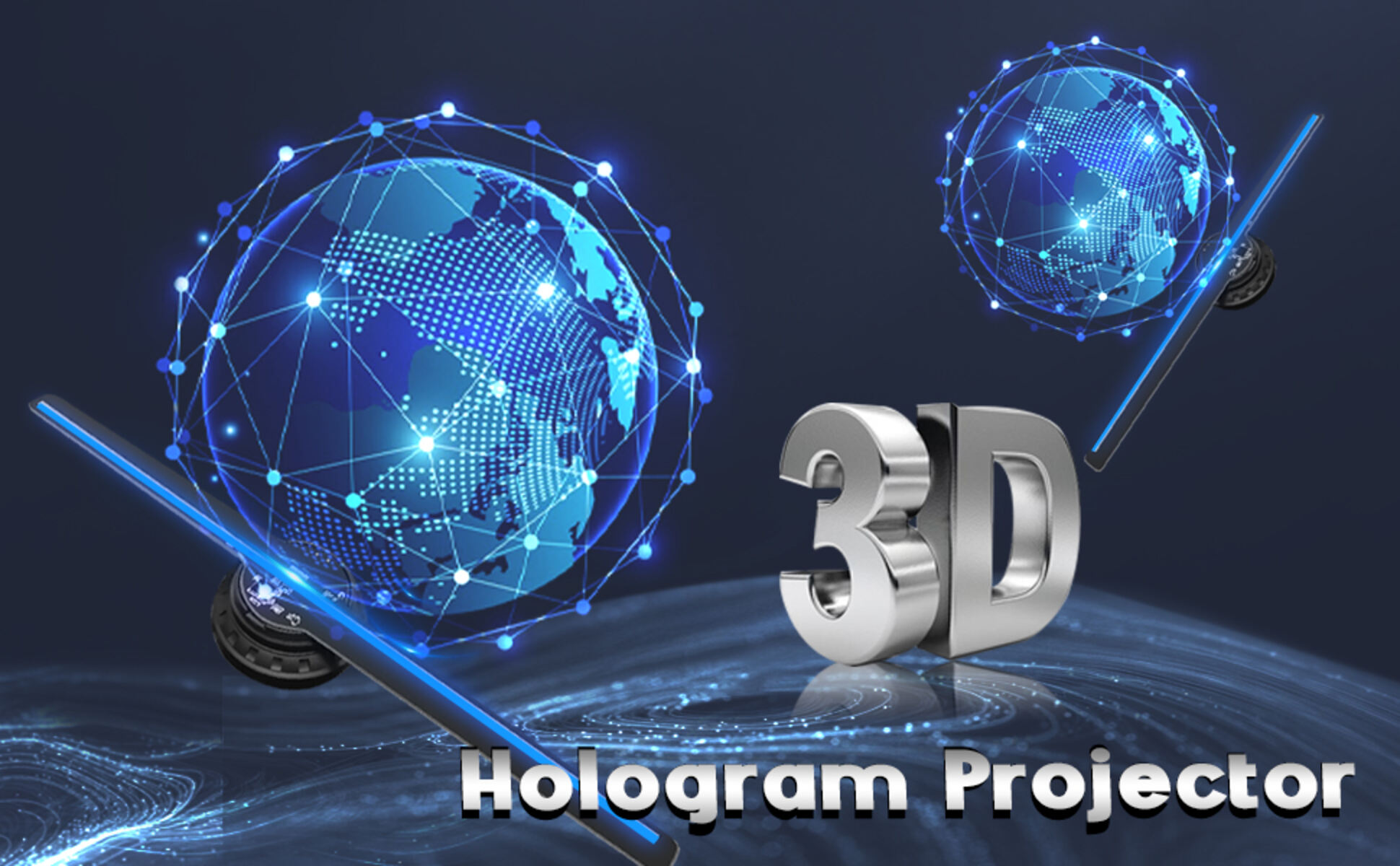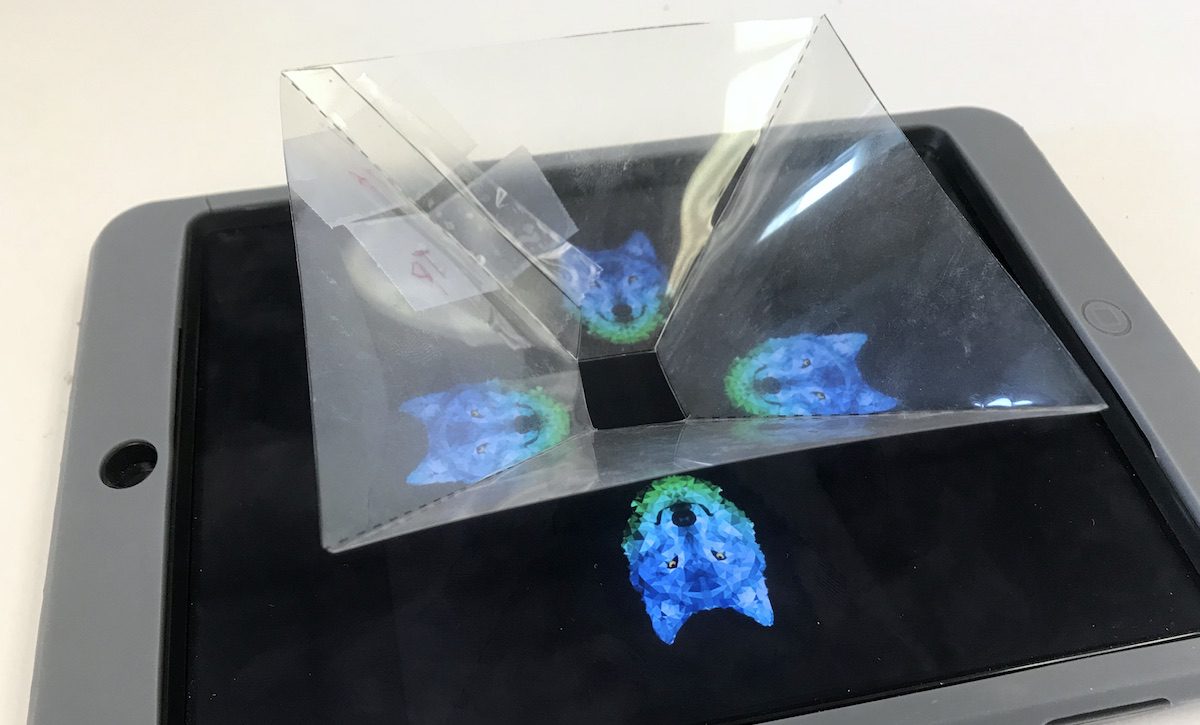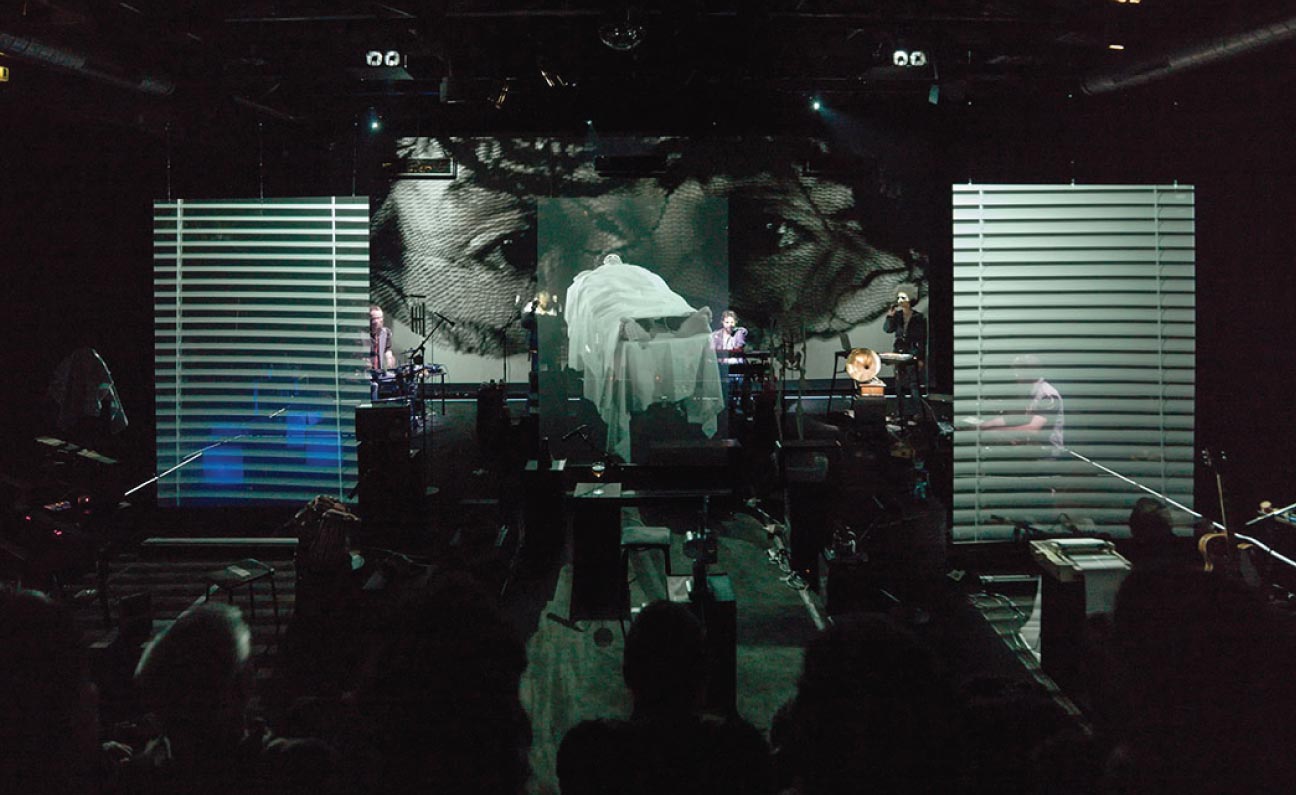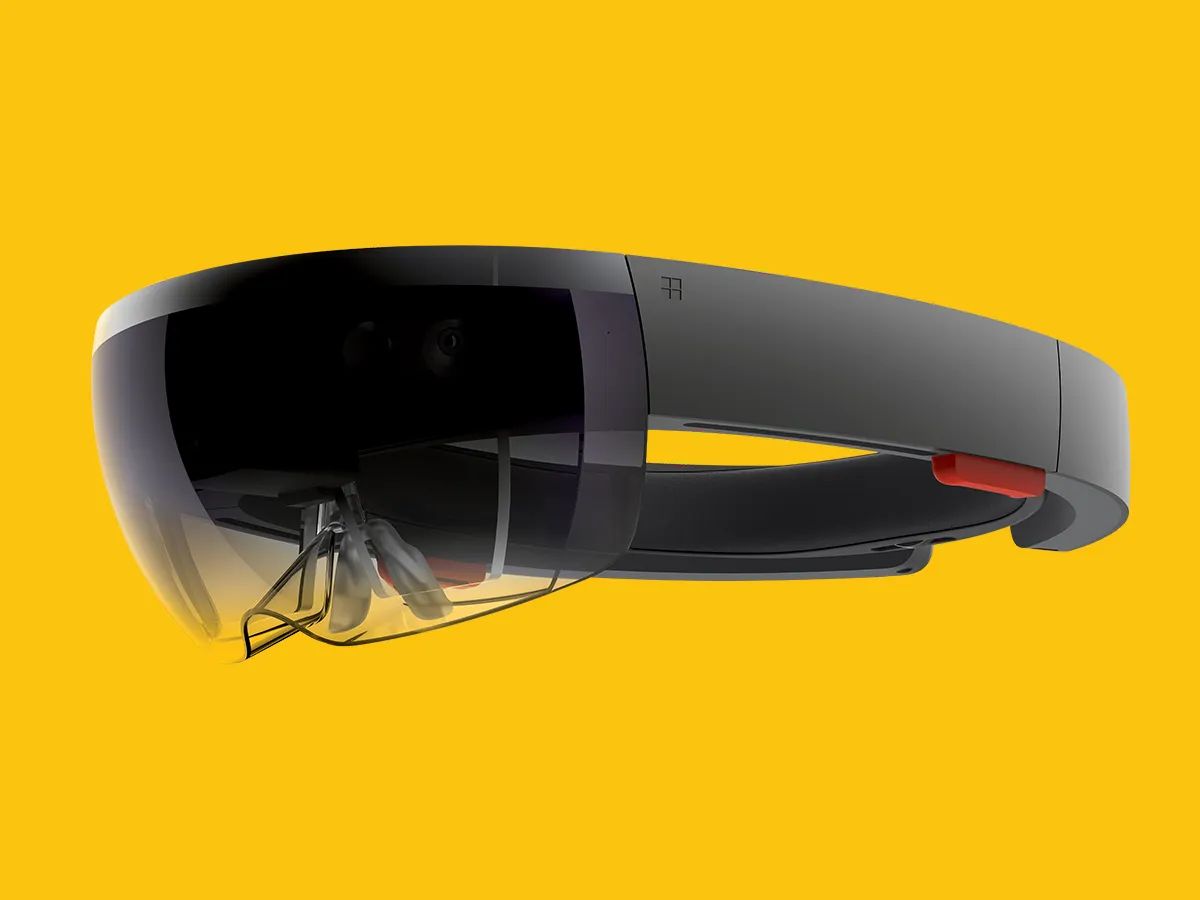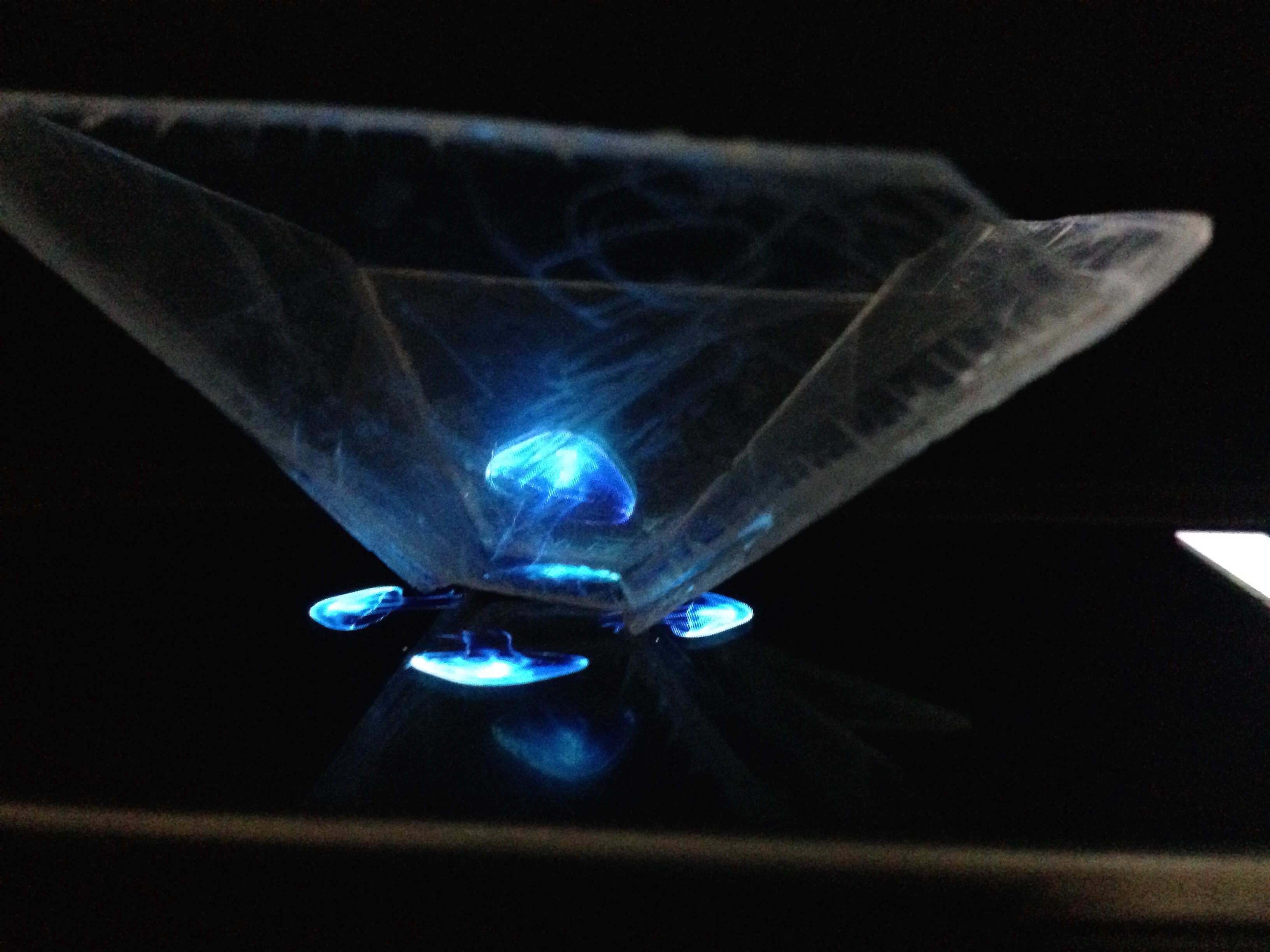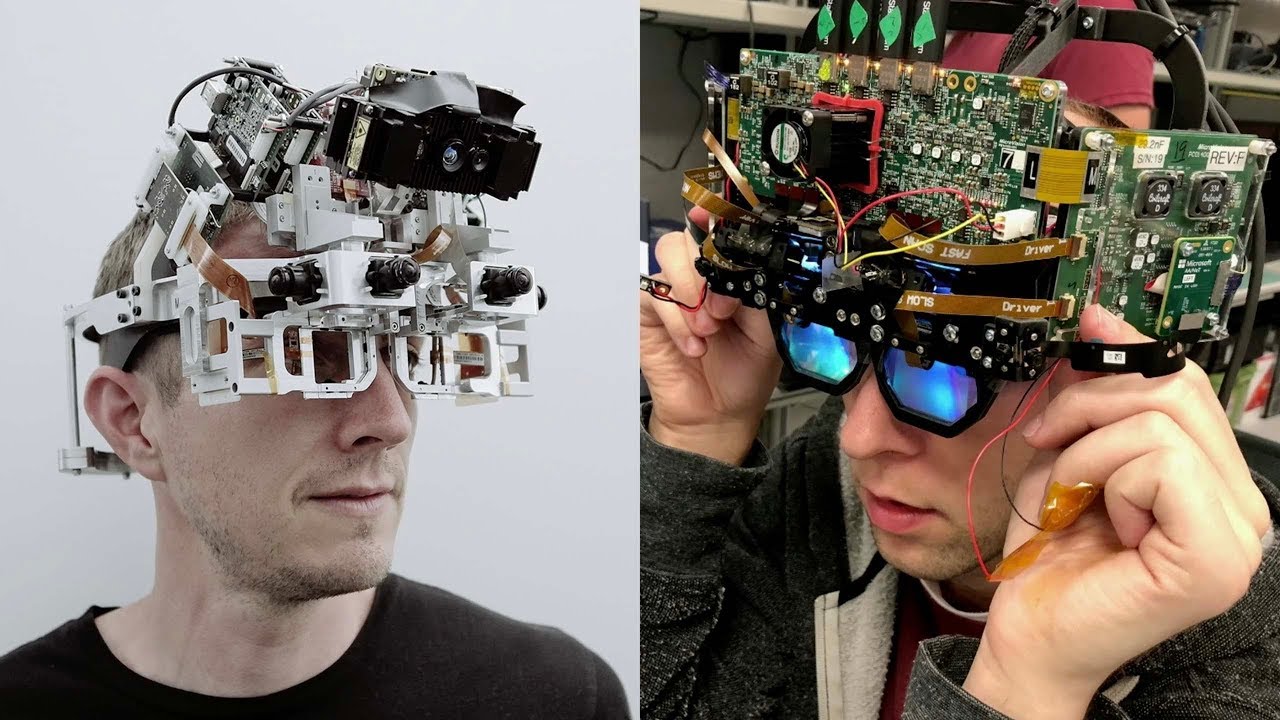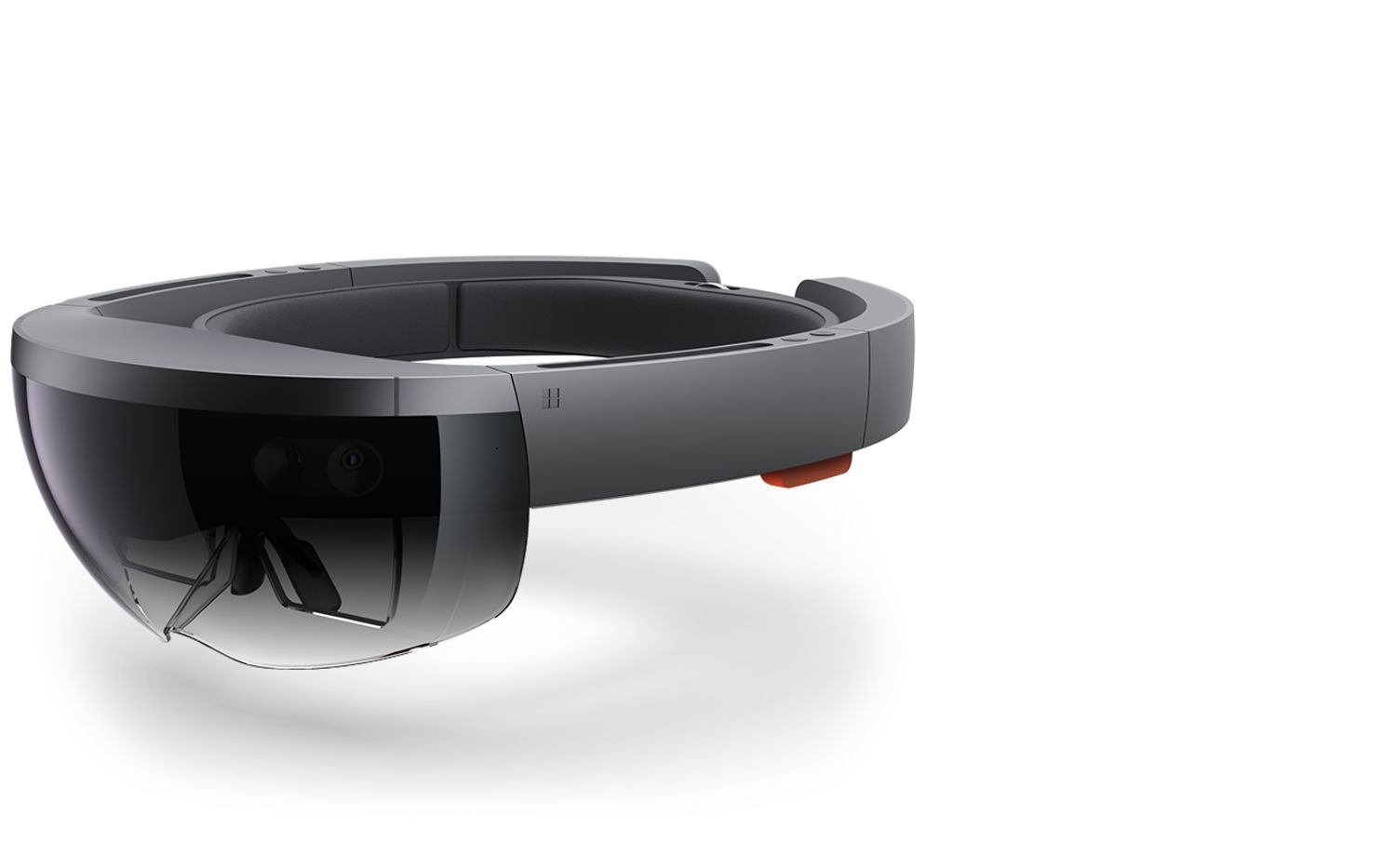Introduction
Welcome to the world of 3D hologram projectors! In recent years, these incredible devices have gained popularity for their ability to create stunning visual displays that seemingly float in mid-air. From captivating advertisements to mesmerizing stage performances, 3D hologram projectors have revolutionized the way we experience visuals.
But what exactly are 3D hologram projectors and how do they work? In this article, we will explore the principles of holography and delve into the inner workings of these intriguing devices.
Imagine being able to see objects or animations projected into thin air, without the need for any physical screens. This is the magic of 3D hologram projectors. Rather than relying on traditional 2D displays, holographic projectors use a combination of light and optical tricks to create the illusion of three-dimensional images floating in space.
Ever since the concept of holography was introduced in the mid-20th century, scientists and engineers have been working tirelessly to bring this technology to life. Today, we can witness the fruits of their labor in the form of 3D hologram projectors that have found applications in various industries, including advertising, entertainment, and even scientific research.
With advancements in technology, 3D hologram projectors have become more accessible and affordable, allowing for a wider range of users to experience the awe-inspiring visuals they offer. Whether you’re a business owner looking to grab the attention of customers, an event organizer aiming to leave a lasting impression, or simply someone who appreciates cutting-edge visual displays, a 3D hologram projector can elevate your visual experience to a whole new level.
Throughout this article, we will explore the principles of holography, delve into the inner workings of 3D hologram projectors, discuss different projection methods, and explore the various applications and benefits of this technology.
Now, let’s embark on this fascinating journey into the world of 3D hologram projectors and discover just how they work their magic!
What is a 3D Hologram Projector?
A 3D hologram projector is a device that uses holography technology to create the illusion of three-dimensional images or animations. Unlike traditional displays that are confined to two dimensions, 3D hologram projectors offer a more immersive and lifelike visual experience.
At its core, a 3D hologram projector utilizes the principles of holography, a technique that allows for the recording and reconstruction of light waves to create a realistic and dynamic image. Holography was first introduced by physicist Dennis Gabor in the 1940s, but it took several decades for the technology to mature enough for commercial applications.
Instead of emitting light directly like a traditional screen, a hologram projector works by projecting light onto a specially coated surface or through a holographic film. This surface or film contains intricate patterns known as holograms, which are created using laser technology.
Holograms capture and store information about the amplitude and phase of light waves. When illuminated with coherent light, such as a laser, the hologram reconstructs the original light waves, forming a 3D image in the process. These reconstructed light waves can be viewed from different angles, giving the illusion that the image is floating in space.
One of the primary benefits of using a 3D hologram projector is that it allows for a more engaging and interactive experience. Viewers can walk around the projected image and see it from different angles, providing a sense of depth and realism that cannot be achieved with traditional displays.
It’s important to note that not all holograms are created equal. There are different types of holograms, each with its own unique characteristics and applications. Some holograms are static, displaying a single image or object, while others are dynamic, allowing for animations or videos to be played back.
In recent years, advancements in 3D hologram technology have made projectors more compact, portable, and affordable. This has opened up new opportunities for businesses, artists, and event organizers to create immersive visual experiences that capture the attention of audiences.
In the following sections, we will explore the principles of holography in more detail and delve into the inner workings of 3D hologram projectors, uncovering the magic behind their realistic and captivating visuals.
Principles of Holography
Before diving into the inner workings of 3D hologram projectors, it’s important to understand the fundamental principles of holography. Holography is a technique that allows for the recording and reconstruction of light waves to create realistic and dynamic 3D images.
At its core, holography relies on the principle of interference, which occurs when two or more light waves meet. When light waves interact, they combine and create areas of constructive and destructive interference, resulting in a pattern of bright and dark regions known as an interference pattern. This pattern contains information about the amplitude and phase of the light waves.
In holography, a hologram is created by splitting a laser beam into two parts: the object beam and the reference beam. The object beam is directed towards the object being recorded, while the reference beam is directed onto a holographic film or photosensitive material.
When the object beam hits the object, it is reflected or scattered, creating a unique pattern of light waves that carries the information about the object’s shape and form. These light waves then interact with the reference beam on the holographic film, creating an interference pattern that is recorded as a series of microscopic grooves.
These grooves act as a physical representation of the interference pattern and contain all the information necessary to reconstruct the original light waves. When coherent light, such as a laser, is shone onto the hologram, it diffracts through the grooves and recreates the original light waves, resulting in a realistic 3D image.
One important characteristic of holograms is their ability to display depth. Unlike traditional photographs or flat images, holograms capture the phase of light waves, allowing for the recreation of 3D objects. This depth perception is achieved through the ability of holograms to diffract light at different angles, depending on the viewer’s perspective.
It’s worth noting that holography is a complex science that requires precise techniques and equipment. The process of creating high-quality holograms involves carefully controlling factors such as the coherence of the light source, the stability of the setup, and the properties of the holographic material.
Now that we have a basic understanding of the principles behind holography, we can explore how these principles are applied in 3D hologram projectors to create realistic and captivating visual displays.
How 3D Hologram Projector Works
3D hologram projectors are fascinating devices that utilize the principles of holography to create the illusion of three-dimensional images or animations. They achieve this by projecting light onto specially constructed surfaces or through holographic films, which contain intricate patterns known as holograms.
When a 3D hologram projector is activated, it emits light, typically in the form of a laser beam, which is directed onto the chosen surface or holographic film. The laser light carries the necessary coherence and intensity to interact with the holograms and produce a realistic 3D image.
Depending on the specific design of the projector, there are different techniques employed to create the illusion of a 3D image. The most common methods used in 3D hologram projectors are reflection and refraction.
In reflection-based hologram projectors, the laser light is directed onto a reflective surface, such as an angled mirror or a metal-coated screen. The holographic film is placed below the reflective surface, allowing the laser light to bounce off it and interact with the holograms. As a result, a 3D image is formed above the reflective surface, appearing to float in mid-air.
On the other hand, in refraction-based hologram projectors, the laser light is projected through the holographic film, which acts as a transparent window or lens. As the light passes through the film, it interacts with the holograms, diffusing and diffracting the light waves to create a visually stunning 3D image that appears to be suspended in space.
Creating holographic images for projection requires careful planning and consideration. Specialized software is used to generate or convert existing 2D images or videos into holographic content. These images or videos are then carefully aligned and encoded onto holographic films to ensure proper interaction with the projected laser light.
The quality and clarity of the 3D image produced by a hologram projector depends on several factors, including the resolution of the hologram, the intensity and coherence of the laser light, and the precision of the optical elements used in the projection system.
Advancements in technology have allowed for the development of different types of 3D hologram projectors, ranging from large-scale installations used in events and exhibitions to smaller, portable devices for personal use. Some projectors utilize multiple laser sources and advanced optics to deliver clearer and more detailed holographic images, while others incorporate interactive features like touch-sensitive interfaces or gesture recognition to enhance user engagement.
The applications of 3D hologram projectors are diverse and constantly expanding. They are commonly used in advertising and marketing campaigns to create eye-catching and memorable displays. They are also employed in entertainment and performing arts to enhance stage shows and exhibitions. Additionally, 3D hologram projectors find applications in medical education, scientific visualization, and even in the gaming industry.
Now that we’ve explored the principles and inner workings of 3D hologram projectors, we can appreciate the incredible technology that brings these mesmerizing visual experiences to life.
Reflection and Refraction
Reflection and refraction are fundamental principles used in 3D hologram projectors to create the illusion of three-dimensional images. These concepts play a crucial role in manipulating light waves to produce visually stunning holographic displays.
Reflection occurs when light waves bounce off a surface, changing direction in the process. In hologram projectors, reflection is employed to redirect the laser light onto the holographic film or surface, where the holograms are located. The reflective surface, often an angled mirror or a metal-coated screen, helps ensure that the laser light interacts with the holograms in the desired manner.
When the laser light hits the holographic film or surface, it undergoes a process called refraction. Refraction occurs when light waves pass through a transparent substance, such as the holographic film, and change direction due to the change in density or optical properties of the material.
The holographic film is designed to have varying density or thickness across its surface, which results in the bending and diffraction of the laser light as it passes through. This diffraction of light waves causes interference, leading to the formation of a three-dimensional image visible to the viewer.
The interaction of the laser light with the holographic film allows for precise control over the direction and dispersion of the light. By carefully engineering the holograms on the film, the hologram projector can manipulate the way the light is refracted, resulting in the formation of complex and lifelike holographic images.
Both reflection and refraction contribute to the immersive nature of the holographic display. Reflection ensures that the projected light is directed toward the holograms, while refraction helps create the necessary diffraction patterns that form the 3D image. Together, these principles enhance the sense of depth and realism experienced by the viewer, making the holographic display truly captivating.
In some advanced hologram projectors, additional optical components such as lenses, prisms, or beam splitters may be used to further control the direction and behavior of the light waves. These components aid in optimizing the holographic projection, ensuring that the image produced is sharp, clear, and visually appealing.
The successful implementation of reflection and refraction in 3D hologram projectors requires careful calibration and alignment of all optical elements. The position and angle of the reflective surface, the holographic film, and the laser light source must be precisely set to achieve optimal results.
By harnessing the power of reflection and refraction, 3D hologram projectors have the ability to create breathtaking displays that push the boundaries of visual technology. Whether used for advertising, entertainment, or educational purposes, hologram projectors continue to captivate audiences with their ability to bring images to life in a way that is truly astonishing.
Projection Methods
3D hologram projectors utilize various projection methods to create the illusion of three-dimensional images that mesmerize and captivate viewers. These methods involve different techniques and technologies to project light and interact with holographic displays.
Reflection-Based Projection: One commonly used projection method in hologram projectors is reflection-based projection. In this method, the laser light is directed onto a reflective surface, such as an angled mirror or a metal-coated screen. The holographic film is positioned below the reflective surface, allowing the laser light to bounce off it and interact with the holograms. Reflection-based projection creates the illusion of a 3D image floating above the reflective surface, appearing as if it is suspended in mid-air.
Refraction-Based Projection: Refraction-based projection is another widely used method in hologram projectors. Instead of reflecting the laser light, this method involves projecting the light through the holographic film. The film acts as a transparent window or lens, which diffracts and diffuses the light waves, creating a visually stunning 3D image that seems to materialize in space. Refraction-based projection provides a unique and immersive experience for viewers, allowing them to see the holographic image from various angles and perspectives.
Pepper’s Ghost Projection: Pepper’s Ghost projection is a technique that has been adapted for use in hologram projectors. It involves strategically placing a transparent reflective surface, such as glass or acrylic, between the projection area and the audience. A high-resolution image or video is projected onto the surface at an angle, and the reflection creates the illusion of a 3D hologram floating in space. Pepper’s Ghost projection is often used to create dynamic and lifelike holographic stage performances, bringing virtual performers to life on stage.
Volumetric Display Projection: Volumetric display projection is a more advanced method that aims to create three-dimensional images that can be viewed from any angle. This technique involves projecting multiple layers of images onto rapidly spinning mirrors or screens. By synchronizing the projected images with the rotation speed, a series of two-dimensional slices are formed, creating the impression of a 3D object. Volumetric display projection offers a more immersive and interactive experience as viewers can walk around the holographic display and observe it from different perspectives.
Each projection method has its own advantages and limitations, and the choice of which method to use depends on factors such as the desired effect, available technology, and intended application of the hologram projector. With ongoing advancements in holographic technology, researchers and innovators are constantly exploring new and innovative projection methods to push the boundaries of what is possible and deliver even more breathtaking holographic experiences.
Creating Holographic Images
Creating holographic images is a complex process that involves careful planning, precise techniques, and cutting-edge technology. These steps are crucial to ensure that the holographic images produced by a projector are vivid, realistic, and visually captivating.
The first step in creating holographic images is to generate or convert existing 2D images or videos into holographic content. Specialized software is used to analyze and manipulate the original images, breaking them down into multiple layers or slices. Each layer represents a different perspective or viewpoint of the object or scene.
Once the layers are created, they are encoded onto a holographic film using laser technology. The film contains microscopic grooves or interference patterns that capture and preserve the information about the amplitude and phase of the light waves. These grooves act as a physical representation of the holographic image.
To ensure accurate encoding, precise alignment of the film and the laser beam is required. Any misalignment can lead to distortion or loss of detail in the holographic image. State-of-the-art holographic technology and advanced optical elements are used to achieve the desired level of precision and accuracy in the encoding process.
The resolution of the holographic image is an important factor in creating high-quality holograms. Higher resolutions result in more intricate and detailed holographic images, while lower resolutions may produce images with less clarity and definition. As technology advances, holographic projectors are becoming capable of producing ever higher resolutions, allowing for more realistic and immersive holographic displays.
Depending on the type of holographic projector being used, different methods can be employed to enhance the visual experience. For example, some projectors use beam splitters or multiple laser sources to create overlapping holographic images, resulting in a more vibrant and dynamic display.
Creating engaging and interactive holographic content is another important aspect of the holographic image creation process. This can involve adding interactive elements, such as touch-sensitive interfaces or motion sensors, to allow users to interact with the holographic display. Such features enhance the user experience and create unique opportunities for immersive storytelling and engaging presentations.
Furthermore, advancements in holographic technology have led to the development of holographic 3D printers. These printers can physically produce objects using a combination of holographic data and 3D printing techniques. This exciting innovation opens up a world of possibilities in fields such as prototyping, manufacturing, and even medical applications.
Creating holographic images is a dynamic and ever-evolving field, with researchers, artists, and engineers constantly pushing the boundaries of what is possible. As technology advances and our understanding of holography deepens, we can expect even more stunning and realistic holographic images in the future.
Types of 3D Hologram Projectors
3D hologram projectors come in various types, each offering unique features and capabilities. These different types cater to diverse needs and applications, providing users with options to suit their specific requirements. Let’s explore some of the most common types of 3D hologram projectors:
Portable Hologram Projectors: This type of hologram projector is compact and lightweight, making it easy to transport and set up in different locations. Portable hologram projectors are perfect for small-scale events, trade shows, and personal use. They often incorporate built-in batteries or power options, allowing for flexibility in terms of placement and usage.
Stage Hologram Projectors: Designed for large-scale events and performances, stage hologram projectors offer high-definition projections that are visible to large audiences. These projectors often feature powerful lasers, advanced optics, and robust synchronization capabilities to create captivating holographic stage shows and performances. Stage hologram projectors are commonly used in concerts, theater productions, and public events.
Augmented Reality (AR) Hologram Projectors: AR hologram projectors combine holography technology with augmented reality to create interactive and immersive experiences. These projectors overlay computer-generated holographic content onto real-world environments, allowing users to interact with virtual objects in real-time. AR hologram projectors have applications in industries like education, gaming, and product visualization.
Interactive Hologram Projectors: Interactive hologram projectors enable users to interact with holographic content through touch-sensitive interfaces, motion sensors, or gesture recognition technology. These projectors provide a dynamic and engaging user experience, allowing for interactive storytelling, digital retail displays, and interactive presentations. Interactive hologram projectors find applications in retail stores, museums, and exhibitions.
Large-Scale Hologram Installations: Large-scale hologram installations are designed for immersive and awe-inspiring experiences. These installations are typically custom-built and can cover extensive areas, such as entire walls or exhibition halls. Complex holographic projections can be achieved using multiple projectors and projection surfaces, creating larger-than-life holographic displays that leave a lasting impression. Large-scale hologram installations are commonly seen in museums, themed attractions, and architectural showcases.
Volumetric Hologram Displays: Volumetric hologram displays go beyond the traditional flat projections and offer a true three-dimensional viewing experience. These displays use multiple projectors and rapidly spinning mirrors or screens to create a volumetric visual effect. Volumetric hologram displays enable viewers to observe holographic content from different angles and perspectives, resulting in a more immersive and realistic experience. They are often used in research, medical imaging, and advanced visualization applications.
As holographic technology continues to advance, new types of 3D hologram projectors are constantly being developed. These projectors aim to provide even more stunning and realistic holographic displays while expanding the possibilities for creative expression, marketing, education, and entertainment.
Benefits and Applications
3D hologram projectors offer a wide range of benefits and have found applications in various industries. Let’s explore the advantages and diverse applications of this groundbreaking technology:
Attention-Grabbing: One of the key advantages of 3D hologram projectors is their ability to capture the attention of viewers. The lifelike and immersive nature of holographic displays instantly captivate the audience, making it an effective tool for advertising, marketing, and brand promotion.
Memorable Experiences: Holographic displays provide a memorable and unique experience for viewers. The realistic and interactive nature of the holographic content creates a lasting impression, enhancing brand recall and increasing customer engagement.
Enhanced Visualization: 3D hologram projectors offer a more vivid and realistic visualization of objects and data. Complex concepts and designs can be displayed in a way that is easily understandable and visually compelling. This makes hologram projectors valuable tools for educational institutions, scientific research, and architectural visualizations.
Increased Interactivity: Interactive features, such as touch-sensitive interfaces or gesture recognition, allow users to actively engage with holographic displays. This interactive element adds a new level of immersion, creating opportunities for experiential marketing, gaming, and interactive presentations.
Flexible Display Sizes: Hologram projectors offer flexibility in display sizes, from small portable devices to large-scale installations. This adaptability makes them suitable for various venues and settings, including retail stores, exhibitions, trade shows, and live events.
Highly Versatile: 3D hologram projectors can showcase a wide range of content, including images, videos, animations, and even live performances. This versatility allows for creative storytelling and innovative content delivery, making it an ideal tool for artists, event planners, and entertainment industries.
Cost-Effective Solutions: The availability of portable and affordable hologram projectors has made holographic displays more accessible than ever before. Businesses, educational institutions, and individuals can now leverage this technology without requiring significant investments in infrastructure or equipment.
Futuristic and Cutting-Edge: Implementing hologram projectors showcases an organization’s commitment to innovative technologies and staying ahead of the curve. It presents an image of being at the forefront of technology, attracting attention and generating buzz.
3D hologram projectors have found applications in a variety of industries. These include advertising and marketing campaigns, trade shows, product launches, museums and exhibitions, entertainment events, stage performances, educational institutions, medical training, research, and architectural visualization.
As holographic technology continues to evolve, the possibilities for its applications are expanding. From retail experiences that blend virtual and physical elements to interactive gaming and immersive storytelling, hologram projectors are transforming the way we engage with visual content.
Conclusion
3D hologram projectors have revolutionized the way we perceive and interact with visual content. Through the principles of holography, these remarkable devices create mesmerizing and lifelike 3D images that captivate audiences and leave a lasting impression.
From portable hologram projectors to large-scale installations, the versatility and flexibility of holographic displays offer countless possibilities in various industries. The attention-grabbing nature of hologram projectors makes them an effective tool for advertising and marketing campaigns, while their immersive and interactive qualities enhance educational experiences and entertainment events.
The benefits of hologram projectors extend beyond engagement and visual appeal. They provide a platform for increased interactivity, allowing users to interact with the holographic content through touch-sensitive interfaces or gesture recognition. Additionally, the enhanced visualization capabilities of hologram projectors make them valuable assets in areas such as scientific research, architectural visualizations, and medical training.
The continuous advancements in holographic technology have made these once-futuristic devices more accessible and affordable. Portable hologram projectors allow individuals and small businesses to leverage the impact of holographic displays without requiring significant investments. Furthermore, holography continues to push the boundaries of innovation, with developments in augmented reality integration, volumetric displays, and interactive features.
As holographic technology continues to evolve, we can expect even more stunning and realistic holographic images, further pushing the boundaries of what is possible. The future of hologram projectors holds exciting prospects, enabling us to immerse ourselves in holographic experiences that were once confined to the realms of science fiction.
Whether it’s captivating audiences with holographic advertisements, educating students with immersive visualizations, or pushing the boundaries of artistic expression, 3D hologram projectors have transformed the way we perceive and engage with visual content. The captivating and lifelike experiences they provide have reshaped industries and continue to push the boundaries of innovation in the world of visual technology.







